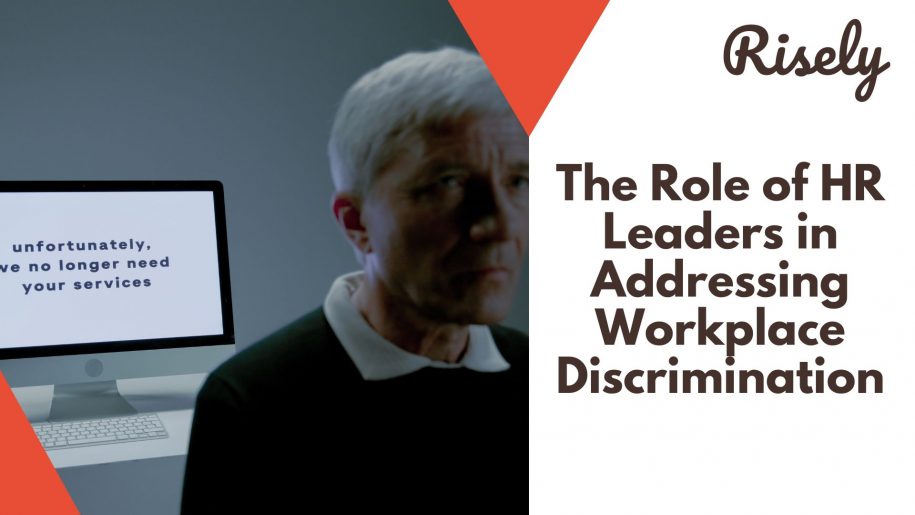The Role of HR Leaders in Addressing Workplace Discrimination
Discrimination in the workplace is a pervasive issue that can have far-reaching consequences for individuals and organizations. It transcends boundaries of gender, race, age, religion, and more, affecting employees at all levels and in all industries. Workplace discrimination erodes the dignity and well-being of those subjected to it and undermines the very fabric of a diverse and inclusive work environment. This comprehensive blog delves into the complex topic of workplace discrimination. We’ll explore the various forms discrimination can take, its underlying causes, the signs that may signal its presence, and most importantly, the steps individuals and organizations can take to combat and prevent it.What is workplace discrimination?
Workplace discrimination is the unfair or unequal treatment of employees or job applicants based on specific characteristics or attributes protected by law. These characteristics, often referred to as “protected classes,” may include:- Race: Discrimination based on a person’s race, ethnicity, or skin color.
- Gender: Discrimination based on a person’s gender, including male, female, transgender, or gender non-conforming individuals.
- Religion: Discrimination based on a person’s religious beliefs, practices, or affiliations.
- Age: Discrimination against individuals older or younger than a certain age, typically 40 or older.
- Disability: Discrimination against individuals with physical or mental disabilities. This includes failure to provide reasonable accommodations.
- Sexual Orientation: Discrimination based on a person’s sexual orientation, such as being gay, lesbian, bisexual, or heterosexual.
- Gender Identity: Discrimination against individuals whose gender identity differs from their sex at birth.
- Marital Status: Discrimination based on a person’s marital status, whether single, married, divorced, or widowed.
How does workplace discrimination affect teams?
Workplace discrimination significantly impacts teams within an organization, creating negative consequences that can harm productivity, morale, and the overall work environment. Several ways in which workplace discrimination affects teams:- Reduced team morale: Discrimination within a team can erode trust and camaraderie among members. Those who witness discrimination may feel demoralized and lose confidence in the fairness of the workplace.
- Lower team productivity: A work environment tainted by discrimination can lead to decreased team productivity. Team members may be preoccupied with discrimination-related concerns, making it difficult to focus on their tasks.
- Increased turnover: Discrimination can drive employees to seek employment elsewhere. High turnover rates disrupt team cohesion and require the remaining team members to take on additional responsibilities, which can lead to burnout.
- Conflict and tension: Discrimination incidents can lead to interpersonal conflicts within teams. Team members may become polarized, creating a hostile or divisive work atmosphere.
- Decreased Employee Engagement: Employees who feel discriminated against may disengage from their work and the organization. Disengaged team members are less likely to contribute actively to team projects.
Signs of workplace discrimination
Recognizing the signs of workplace discrimination is crucial for individuals, managers, and organizations to address and prevent such behaviors. Common signs that may indicate workplace discrimination:- Unequal treatment: When employees with similar qualifications and job responsibilities receive different treatment based on protected characteristics such as race, gender, age, or religion, it may signal discrimination.
- Biased hiring or promotion decisions: Discrimination can be evident in biased hiring, promotion, or advancement decisions, where candidates are selected or passed over due to their protected characteristics rather than their qualifications.
- Hostile work environment: A hostile work environment may be characterized by offensive jokes, slurs, derogatory comments, or harassment related to protected characteristics. This creates a toxic atmosphere for affected employees.
- Inappropriate comments or stereotyping: Discrimination can manifest through stereotyping, offensive remarks, or derogatory comments about a person’s race, gender, religion, disability, or other protected attributes.
- Unfair discipline: Discipline, such as warnings, suspensions, or terminations, administered unfairly or disproportionately to employees based on their protected characteristics, is a sign of discrimination.
- Excessive scrutiny: Some employees may be subjected to unwarranted scrutiny, surveillance, or performance evaluations due to their protected characteristics, indicating discriminatory behavior.
How to deal with workplace discrimination?
Dealing with workplace discrimination is essential for ensuring a fair and inclusive work environment. Whether you are an employee who has experienced discrimination or a manager responsible for addressing such issues, here are steps to effectively deal with discrimination at work:For employees
- Document incidents: Keep a detailed record of discriminatory incidents, including dates, times, locations, individuals involved, witnesses, and a description of what transpired. This documentation can be crucial when reporting discrimination.
- Speak up: If you feel comfortable and safe doing so, consider addressing the issue directly with the person responsible for the discrimination. Sometimes, people may not be aware of the impact of their actions.
- Report to management or HR: If addressing the issue directly does not resolve it, or if you feel uncomfortable, report the discrimination to your manager, Human Resources (HR), or the designated reporting authority within your organization.
- Follow company policies: Familiarize yourself with your organization’s anti-discrimination policies and procedures. Ensure you follow the prescribed steps for reporting discrimination, which may involve completing a formal complaint.
- Seek support: Connect with coworkers, employee resource groups, or support networks within your organization or industry. Sharing your experiences and seeking advice can be empowering.
For managers
- Establish clear policies: Develop and communicate clear anti-discrimination policies and procedures within the organization. Ensure that all employees are aware of their rights and responsibilities.
- Train employees: Provide anti-discrimination training for all employees, including managers and supervisors, to raise awareness and prevent discrimination.
- Create an open reporting culture: Encourage employees to report discrimination without fear of retaliation. Make reporting mechanisms easily accessible and confidential.
- Conduct thorough investigations: Take all complaints seriously and conduct impartial, complete, and timely investigations. Involve HR or an external investigator if necessary.
- Review and improve policies: Periodically review and update anti-discrimination policies and practices to ensure they remain effective and aligned with legal requirements.
Other Interesting Reads
Role of an HR leader to overcome workplace discrimination
HR leaders are crucial in overcoming workplace discrimination and fostering an inclusive and equitable work environment. Here are several actions that HR leaders can take to address and prevent discrimination effectively:- Develop and communicate clear policies: Establish comprehensive anti-discrimination and anti-harassment policies that clearly define prohibited behaviors, reporting procedures, and consequences for violations. Ensure that all employees are aware of these policies.
- Implement reporting mechanisms: Ensure the organization has clear and accessible reporting mechanisms for employees to report discrimination, harassment, or other unfair treatment. Encourage employees to come forward without fear of retaliation.
- Address and remediate discrimination: Take appropriate corrective actions if discrimination is substantiated. This may include disciplinary measures, sensitivity training, or policy changes. Address both the immediate issue and its root causes.
- Support employee resource groups (ERGs): Encourage and support the formation of ERGs focused on diversity, equity, and inclusion. These groups can provide valuable insights, promote inclusivity, and help shape HR policies and initiatives.
- Promote leadership accountability: – Hold leaders and managers accountable for creating and maintaining inclusive teams and workplaces. Leaders should lead by example and demonstrate a commitment to diversity and equity.
Conclusion
In the face of workplace discrimination, silence is not an option. It’s a collective responsibility to root out discrimination in all forms and create workplaces where everyone can thrive, free from prejudice and bias. Our journey through this guide has shed light on the profound impact of discrimination, the myriad ways it manifests, and the steps we can take to combat it. Remember that awareness is the first step toward change. Recognize the signs, challenge stereotypes and biases, and support those who experience discrimination. Organizations must lead by example, implement robust policies, foster inclusive cultures, and prioritize diversity at all levels.Ace performance reviews with strong feedback skills.
Master the art of constructive feedback by reviewing your skills with a free assessment now.
Other Related Blogs
Performance Management Training: Empowering Managers To Manage Better
Performance Management Training: Empowering Managers To Manage Better Remember that feeling of dread when you knew performance review season was rolling around? Yeah, us, too. For many employees, performance reviews…
Manager Development Goals And How To Reach Them: Opportunities And Areas To Focus On
Manager Development Goals And How To Reach Them: Opportunities And Areas To Focus On You’ve meticulously crafted a development program for your high-potential employees, but their managers just aren’t on…
Leader Competence: The Cornerstone of Effective Leadership Development
Leader Competence: The Cornerstone of Effective Leadership Development Imagine you’re leading a talented team, but somehow, projects are stalling, and motivation seems slipping. You see the potential in your people,…
Confused by L&D Metrics? Here’s How to Focus on What Matters
Confused by L&D Metrics? Here’s How to Focus on What Matters You’ve undoubtedly witnessed companies celebrating a record number of employees completing leadership training programs. Champagne toasts erupt, press releases…


